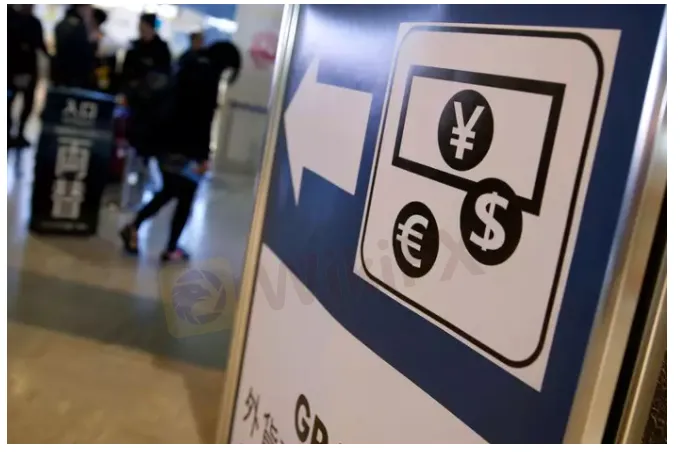简体中文
繁體中文
English
Pусский
日本語
ภาษาไทย
Tiếng Việt
Bahasa Indonesia
Español
हिन्दी
Filippiiniläinen
Français
Deutsch
Português
Türkçe
한국어
العربية
All eyes on approaching Fed meet, yen slips further
Abstract:The yen remained under pressure on Tuesday and the Australian dollar was bruised by the latest lockdowns in China following new COVID-19 outbreaks, but moves were more muted than in recent days as traders eyes turned to this weeks Fed meeting.

The U.S. Federal Reserve is set to raise rates for the first time since the pandemic at its meeting which concludes Wednesday, with traders looking for indications about the pace of future rate hikes.
Markets anticipate a 25 basis point rise at this meeting, according to the CMEs Fedwatch tool, but pricing has risen to indicate a 70% chance of a larger 50 basis point hike at its subsequent meeting in May, due to concerns about inflation.
“We think the statement and chair Powells press conference after the meeting will be influential in terms of market pricing for a 50 basis point rise in May and beyond, and that will impact the U.S. dollar intraday,” said Carol Kong, an FX strategist at Commonwealth Bank of Australia.
The dollar index, which measures the greenback against six major peers was at 99.108, not far off the 99.415 touched a week ago, its highest level since May 2020.
The yen was at 118.37 per dollar on Tuesday morning, after tumbling sharply in recent sessions as the contrast between rising benchmark rates in the United States and low rates in Japan becomes ever more apparent as the Fed begins to tighten.
The return of risk sentiment to markets, partly on the back of hints of a negotiated end to the war in Ukraine, has also taken away some of the support for the safe-haven Japanese currency.
Russian and Ukrainian delegations held a fourth round of talks on Monday but no new progress was announced. Discussions were due to resume on Tuesday.
The euro was fairly steady at $1.0947.
Traders were also watching the Chinese yuan which weakened to a one-month low against the dollar on Monday, breaching a key threshold, pressured by rising expectations of monetary policy easing and worries over the fast spread of locally transmitted coronavirus cases, which caused lockdowns in some cities.
The offhsore yuan was softer at 6.398 per dollar, though the Peoples Bank of China defied market expectations by keeping a key interest rate unchanged on Tuesday.
The Australian dollar was under pressure at $0.7190, having tumbled 1.5% on Monday, hurt by a halt to the surge in commodities prices which sent it higher earlier in the month.
Kon said the situation in China was also weighing on the Aussie.
Sterling was also beaten down at $1.3005, while in the world of cryptocurrencies, bitcoin was down 1.7% at around $39,000

Disclaimer:
The views in this article only represent the author's personal views, and do not constitute investment advice on this platform. This platform does not guarantee the accuracy, completeness and timeliness of the information in the article, and will not be liable for any loss caused by the use of or reliance on the information in the article.
Read more

Blockchain Decentralization: Empowering a Trustless Future
In recent years, blockchain technology has rapidly evolved from a niche innovation behind Bitcoin into a transformative force across industries. At its core, blockchain decentralization refers to the distribution of authority and decision-making away from a central entity and into the hands of a distributed network of participants. This shift redefines how data is stored and verified and paves the way for trustless, transparent, and resilient systems that challenge traditional centralized models.

The president of @Liberland, @Vít Jedlička come on stage, dialogue on trading security.
The 2025 WikiEXPO Hong Kong Station is about to grandly open. the president of @Liberland, @Vít Jedlička come on stage, dialogue on trading security.

Countdown: 1 day.WikiEXPO2025's first stop, Hong Kong, is about to open.
⏰ Countdown: 1 day. WikiEXPO2025's first stop, Hong Kong, is just tomorrow. Focus on transaction security and explore new investment opportunities. ???? Get ready to start now. See you tomorrow.

JustForex vs JustMarkets: A Comprehensive Comparison in 2025
Selecting the right forex broker can make the difference between trading success and frustration for most investors, especially retail investors. As retail traders gain unprecedented access to global markets, the choice between platforms like JustForex and JustMarkets becomes increasingly significant. Both brokers offer some shining features within the forex and CFD trading space, but their approaches differ in some areas.
WikiFX Broker
Latest News
TradingView Brings Live Market Charts to Telegram Users with New Mini App
Trump tariffs: How will India navigate a world on the brink of a trade war?
Interactive Brokers Launches Forecast Contracts in Canada for Market Predictions
Authorities Alert: MAS Impersonation Scam Hits Singapore
Stocks fall again as Trump tariff jitters continue
INFINOX Partners with Acelerador Racing for Porsche Cup Brazil 2025
Regulatory Failures Lead to $150,000 Fine for Thurston Springer
April Forex Trends: EUR/USD, GBP/USD, USD/JPY, AUD/USD, USD/CAD Insights
March Oil Production Declines: How Is the Market Reacting?
Georgia Man Charged in Danbury Kidnapping and Crypto Extortion Plot
Currency Calculator







